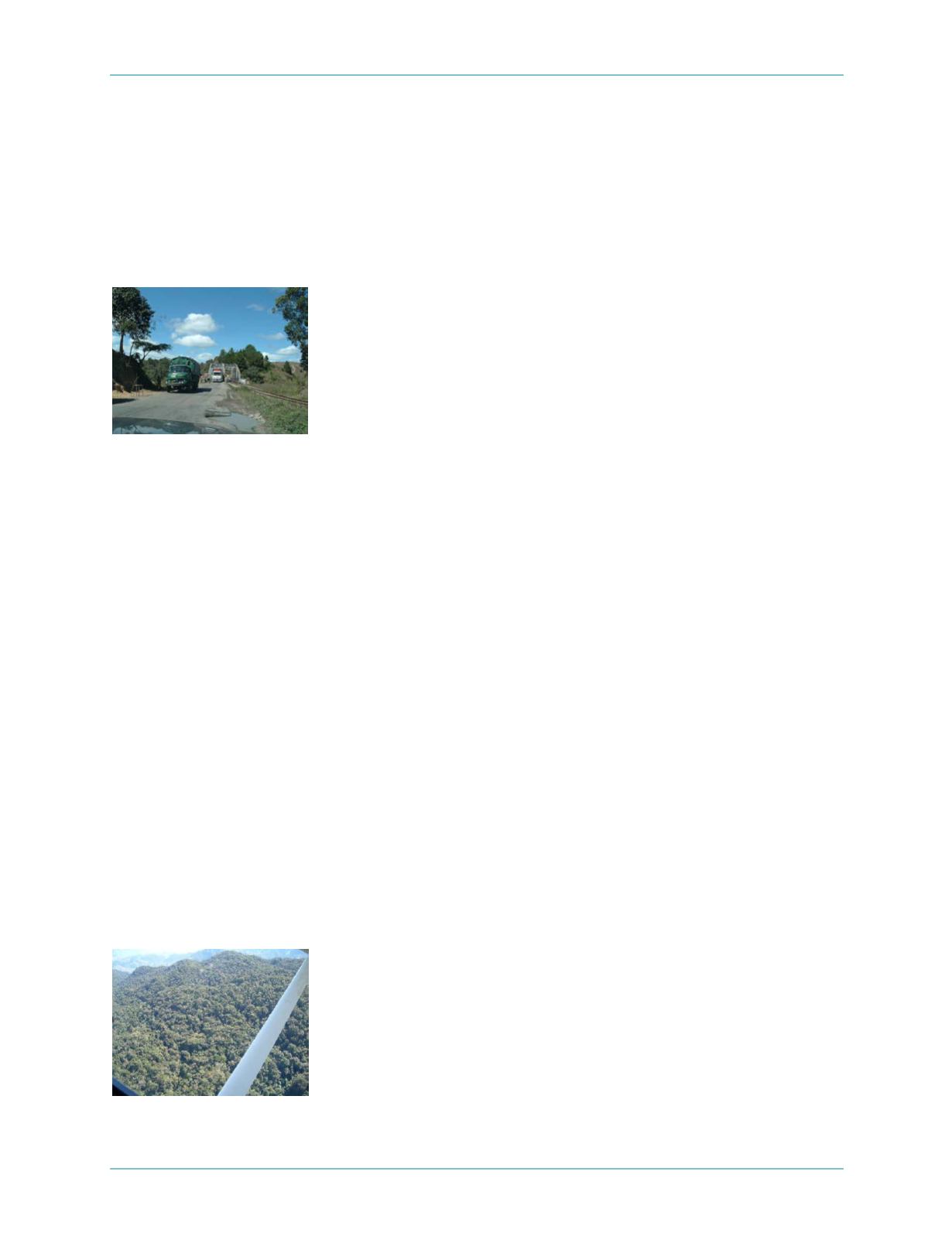
Summary
along the route suggest that any business benefits will also be lower
than at other sites.
There is some potential for short-term disruption of travel and transport
routes, both by land and water. However, consultative forward planning
of disruptive construction activity and provision where necessary of
alternative means of travel and transport, will be used to mitigate these.
In order to construct the pipeline, access roads will need to be built both
to and along the route. There are a number of alternatives for access
routing to service the pipeline, but due consideration is being taken for
the needs of local populations for a permanent road. It was clear during
consultations that there is a strong desire for roads on the part of people
in the less accessible communes between Moramanga and Toamasina.
In addition, baseline studies indicated very poor health and education
status of remote populations and an inability to market agricultural
surplus. Access roads, with government or private transport services,
would significantly assist in addressing fundamental socio-economic
constraints.
Infrastructure
RN2 bridge over Mangoro
River
A cultural specialist will be part of the team working with the land survey
crew prior to construction of the pipeline. The objective will be to fine
tune the route so as to avoid damage to cultural sites identified during
baseline studies and any additional ones that might be found. Should
this not be possible, then a relocation process for the resource would
need to be agreed to with affected people, using accepted local cultural
practice.
Culture
Biodiversity
The main potential impacts to biodiversity concern the required routing
through the Ankeniheny–Zahamena forest corridor, plus potential
impacts to endemic fish and other species at river crossings.
Avoidance of primary forest during design, provides the best mitigation to
limit native plant community losses with associated reduction of impacts
to fauna. Over 90% of the route occurs in areas that have already been
disturbed by people. A total of 116 ha of forest land (12% of the route)
will be affected by construction of the pipeline. Of this portion, primary
forest amounts to 28 ha while disturbed or managed forests amount to
88 ha.
Flora and fauna
Ankeniheny–Zahamena
Corridor
Two general methods of reclamation will be used along the route. For a
majority of the route where areas have been previously disturbed, the
primary reclamation objective is erosion control. However, within
sections where transitional and zonal forest exist near the mine site, and
in currently disturbed sections in the Ankeniheny–Zahamena Corridor,
habitat rehabilitation will incorporate the use of native species with the
long-term objective of re-establishing primary forest on the right-of-way.
The restoration program will cover 60 ha and be within the framework of
a well designed research project. Re-establishing tropical forest in
January 2006
Ambatovy Project — 23


